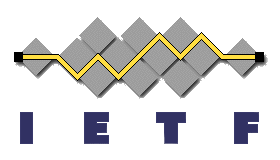Available Standards (13)
Showing standards 1 - 13

draft-contreras-alto-service-edge-04 Use of ALTO for Determining Service Edge
Service providers are starting to deploy and interconnect computing capabilities across the network for hosting network functions and applications...
DISCUSSION GROUPS
Cloud and Edge Computing

draft-ietf-mops-ar-use-case-04Media Operations Use Case for an Augmented Reality Application on Edge Computing Infrastructure
This document explores the issues involved in the use of Edge Computing resources to operationalize media use cases that involve Extended Reality (XR) applications...
DISCUSSION GROUPS
Cloud and Edge Computing

draft-irtf-t2trg-iot-edgeIoT Edge Challenges and Functions
This document outlines the requirements of the emerging IoT Edge and its challenges...
DISCUSSION GROUPS
Cloud and Edge Computing

IETF - RCF4944 - Transmission of IPv6 Packets over IEEE 802.15.4 Networks
The document describes the frame format for transmission of IPv6 packets and the method of forming IPv6 link-local addresses and statelessly autoconfigured addresses on IEEE 802..
DISCUSSION GROUPS
IoT Internet of Things

IETF - RCF7400 - 6LoWPAN-GHC: Generic Header Compression for IPv6 over Low-Power Wireless Personal Area Networks
This document is a product of the Internet Engineering Task Force (IETF). It represents the consensus of the IETF community...
DISCUSSION GROUPS
IoT Internet of Things

IETF - RCF7428 - Transmission of IPv6 Packets over ITU-T G.9959 Networks
This document is a product of the Internet Engineering Task Force (IETF). It represents the consensus of the IETF community...
DISCUSSION GROUPS
IoT Internet of Things

IETF - RCF8025 - 6LoWPAN - IPv6 over Low-Power Wireless Personal Area Network (6LoWPAN) Paging Dispatch
As more and more protocols need to be compressed, the encoding capabilities of the original dispatch defined in the 6LowPAN adaptation-layer framework ([RFC4944] and [RFC6282])..
DISCUSSION GROUPS
IoT Internet of Things

IETF - RFC7388 - 6LoWPANs - Definition of Managed Objects for IPv6 over Low-Power Wireless Personal Area Networks (6LoWPANs)
The document defines a portion of the Management Information Base (MIB) for use with network management protocols...
DISCUSSION GROUPS
IoT Internet of Things

IETF - RFC7668 - IPv6 over BLUETOOTH(R) Low Energy
The low- power variant of Bluetooth has been standardized since revision 4.0 of the Bluetooth specifications, although version 4.1 or newer is required for IPv6...
DISCUSSION GROUPS
IoT Internet of Things

IETF - RFC7973 Assignment of an Ethertype for IPv6 with Low-Power Wireless Personal Area Network (LoWPAN) Encapsulation
LoWPAN encapsulation as defined in RFC 4944 has been updated by [RFC6282], and may be extended and modified by future IETF Standards...
DISCUSSION GROUPS
IoT Internet of Things

IETF - RFC8163 -Transmission of IPv6 over Master-Slave/Token-Passing (MS/TP) Networks
Master-Slave/Token-Passing (MS/TP) is a medium access control method for the RS-485 physical layer and is used primarily in building automation networks...
DISCUSSION GROUPS
IoT Internet of Things

OAuth 2.0
OAuth 2.0 is the industry-standard protocol for authorization...
DISCUSSION GROUPS
Circular Economy including Digital Product Passport